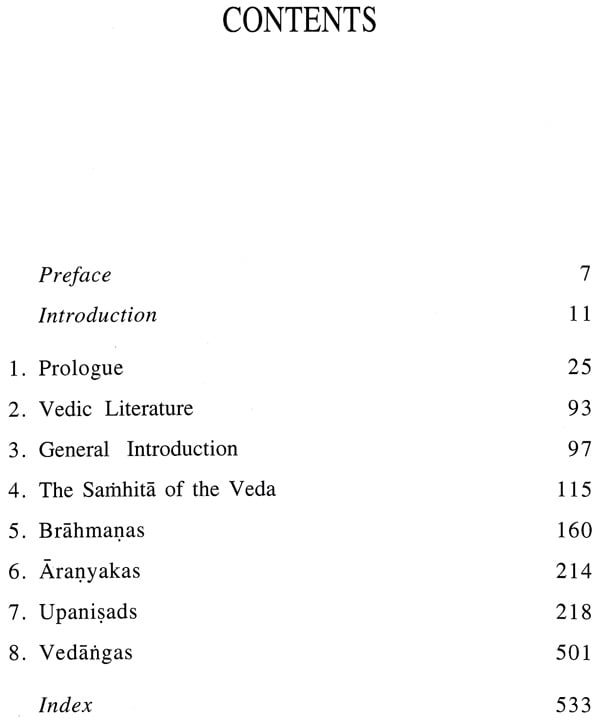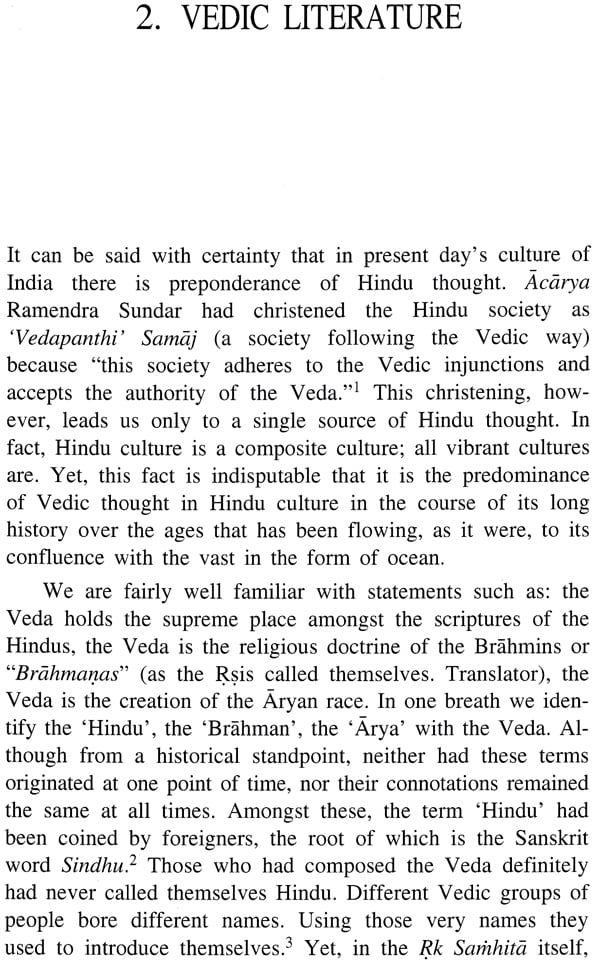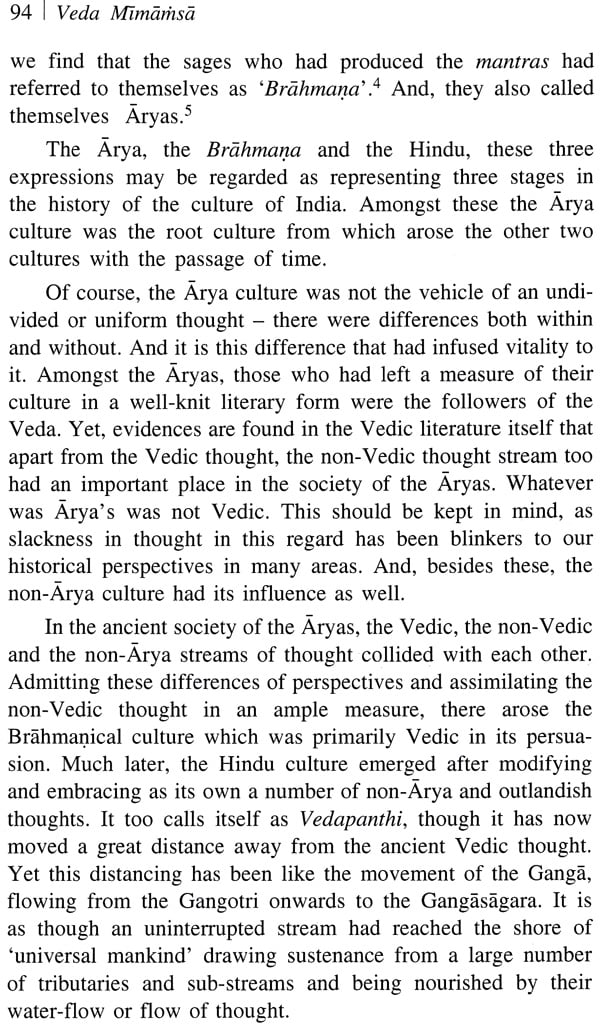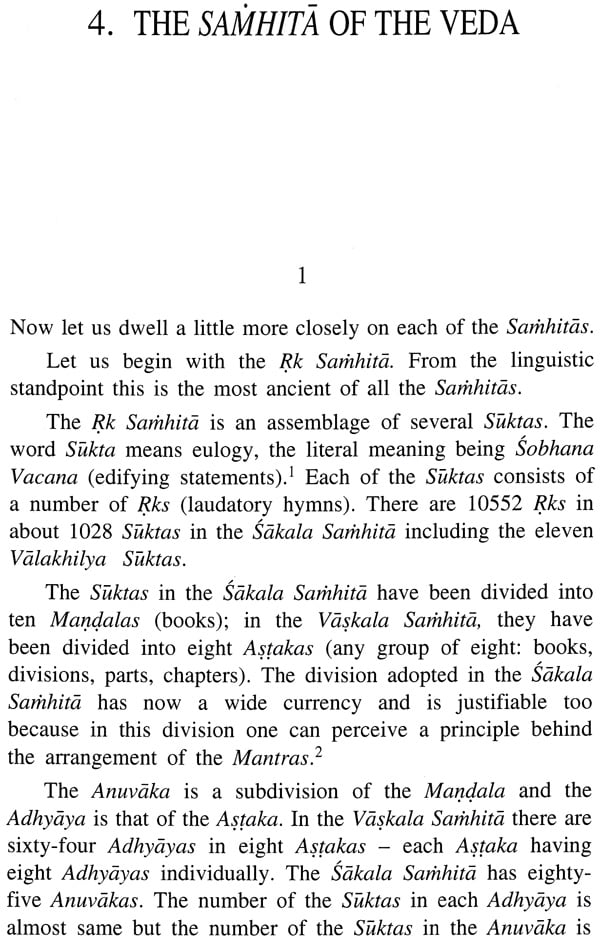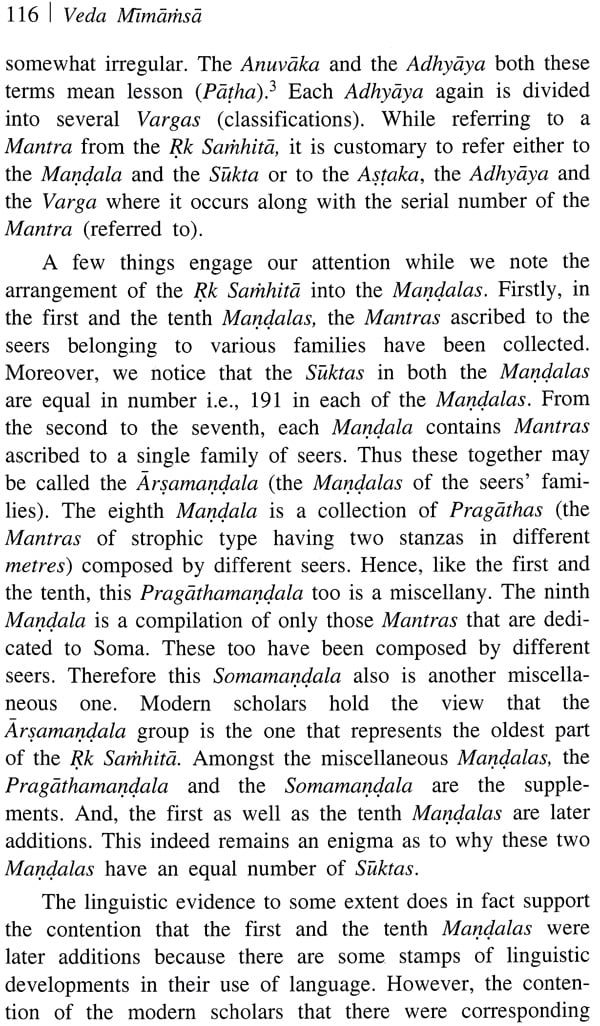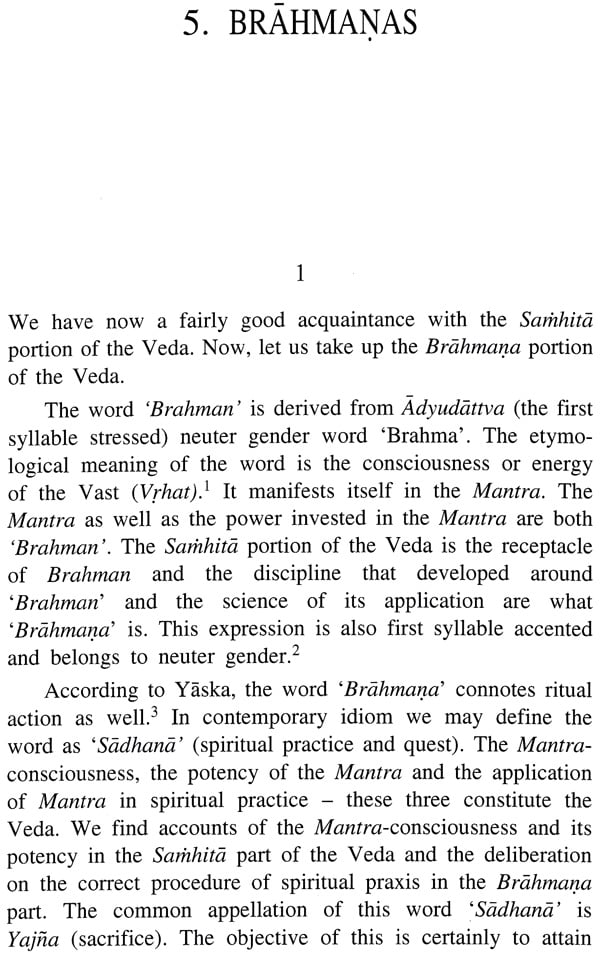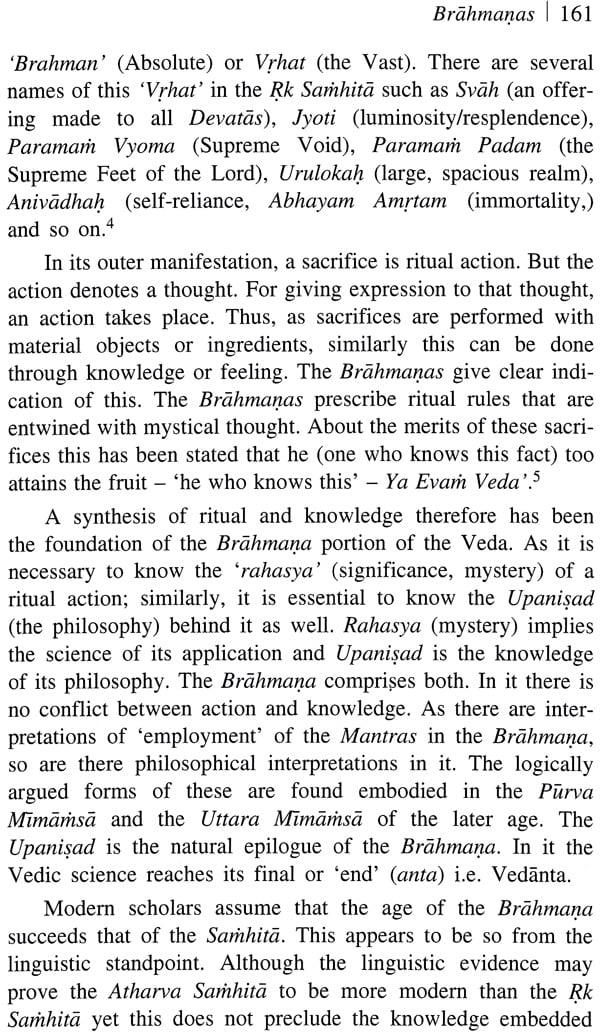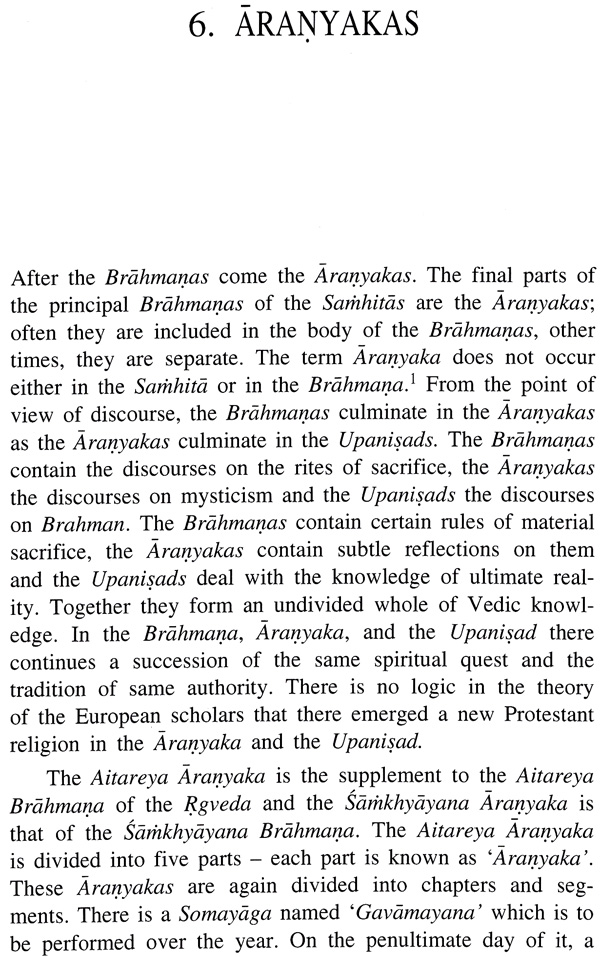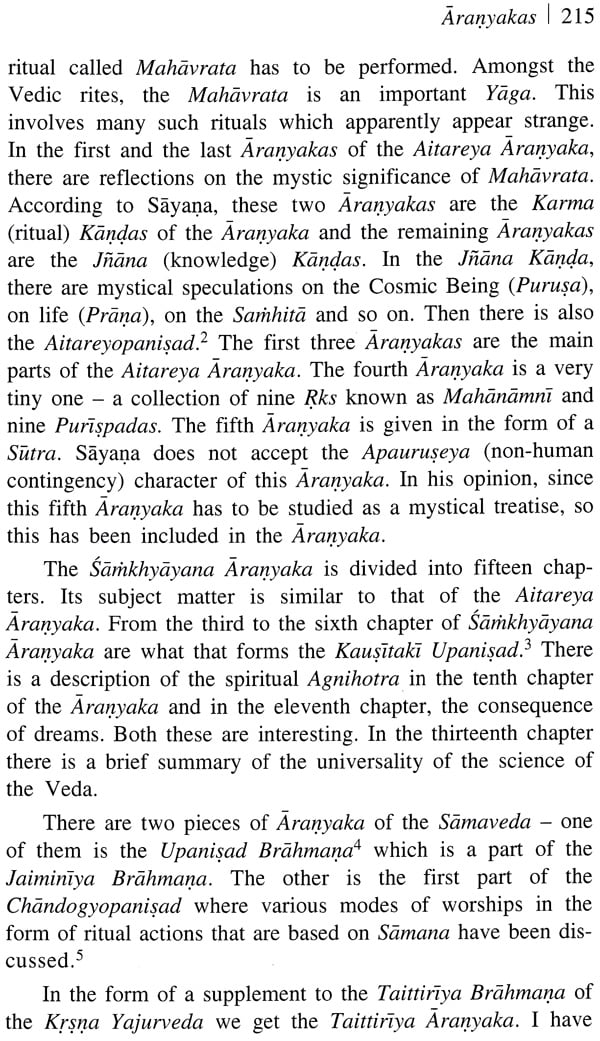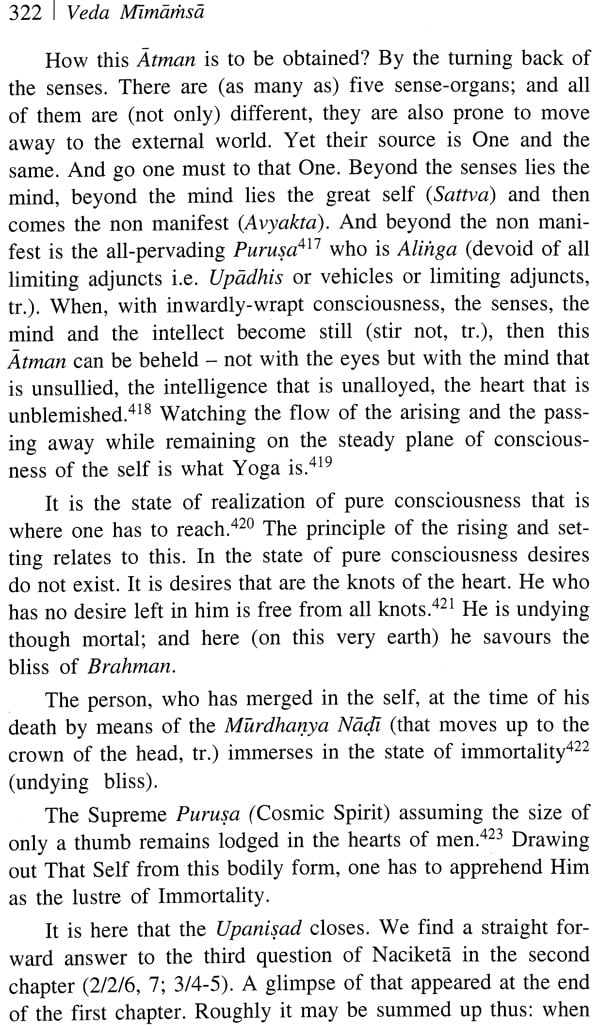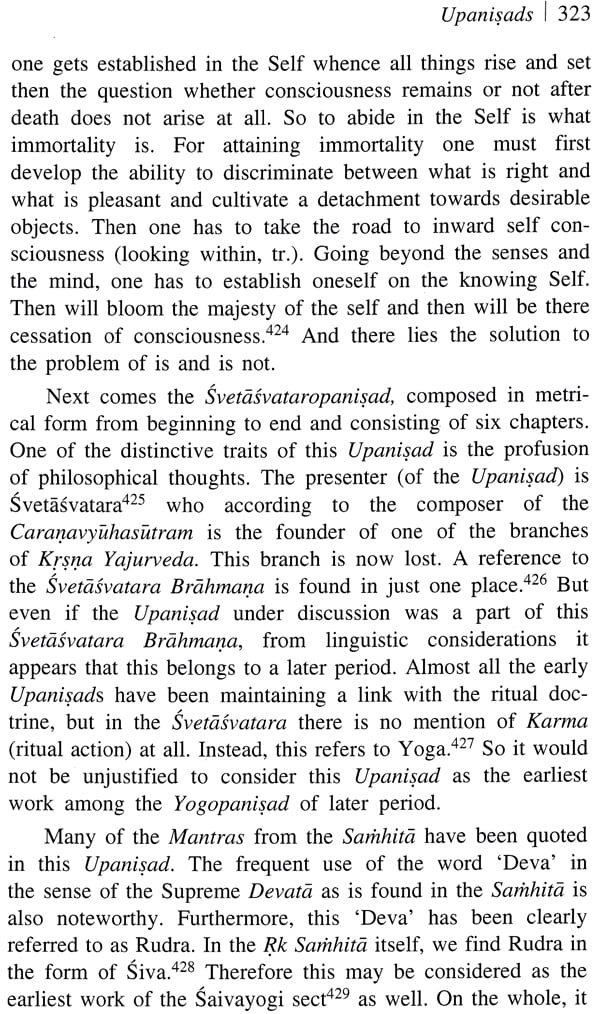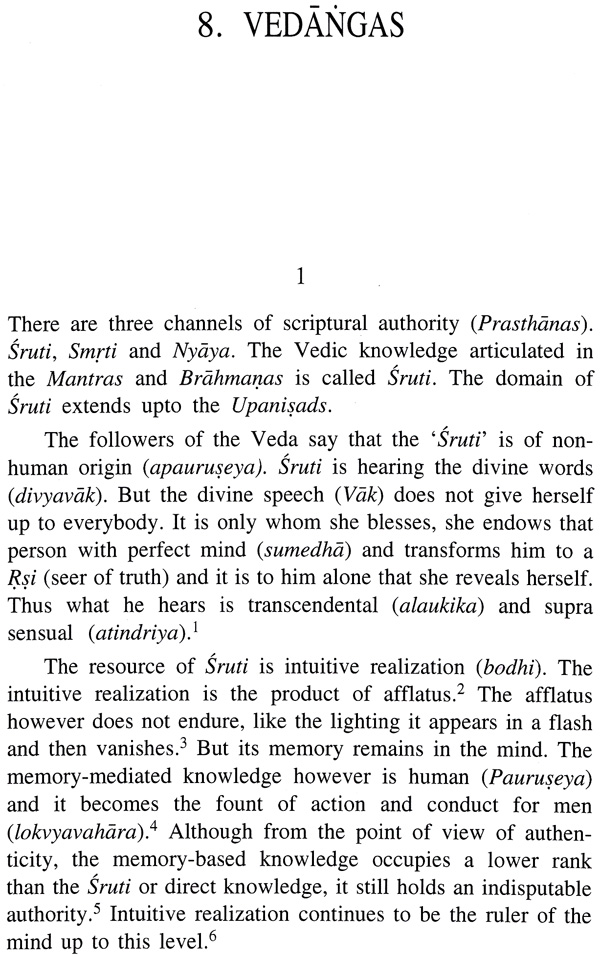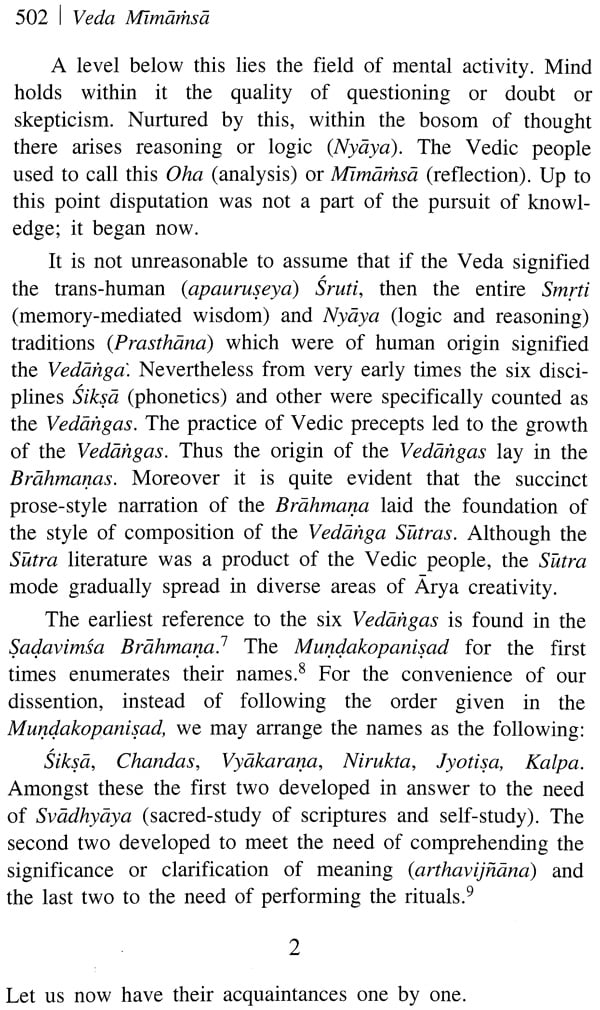
Veda Mimamsa
Book Specification
| Item Code: | NAR642 |
| Author: | Anirvan |
| Publisher: | Akshaya Prakashan |
| Language: | English |
| Edition: | 2018 |
| ISBN: | 9788188643660 |
| Pages: | 548 |
| Cover: | Hardcover |
| Other Details | 9.00 X 6.00 inch |
| Weight | 800 gm |
Book Description
`Veda Mimaiinsa, as the name denotes is an investigation into the mystery of the Veda. Delving deep into the nature of Vedic literature, the moorings and reflections contained in it and the various modes of its interpretations down the ages, Sri Anirvan in this epoch making book of his through his deep insight, profound understanding, threadbare and lucid analysis has unveiled the real meaning of the mystic language of Veda tearing apart the misconceptions surrounding it. These misconceptions grew, Anirvan reflected, out of the misinterpretations of modern Indologists who unfortunately projected and popularized the notion that Veda was a senseless ritualistic doctrine created by premature primitive minds. Anirvan has made it clear that Veda is primarily the storehouse of spiritual knowledge and that the diverse spiritual and religious thoughts and practices flowing through india over the centuries are in fact drawn from the same source-stream of perennial spiritual praxis and wisdom contained in the Veda. Anirvan has looked into the poetical philosophy of Vedic seers and has also shed a new light in the modes of interpretation by explaining that the direct luminous perception (cinmaya pratyaksvada) should be the right approach to proper understanding of the Veda and also of the ethos that created such luminous and voluminous body of literature.
Sri Anirvan was born on July 8, 1896 in the town of Mymensingh (now in Bangladesh). At the age of eleven he knew the Astadhydyi of Papini by heart and daily recited a chapter from the Gita. He went for his college studies to Dhaka and later on to Calcutta. After completing his studies, Sri Anirvan took Sanyasa and became Nirvanananda Saraswati. But a few years later he dropped the ochre robes and changed his name to Anirvan, by which name he became known to the world at large.
Between 1930 and 1942, he lived with a friend at Allahabad, Lucknow, Delhi and Ranchi. Later on, he moved to Lohaghat in Almora where Madame Lizelle Reymond, a Swiss lady, spiritual seeker joined him and literally took him to the West through her books. Shri Anirvan moved to Shillong in Assam and finally to Calcutta in 1965. He fell ill in July 1971 and passed away on 31 May 1978, at the age of 82.
His first book was a Bengali translation of Sri Aurobindo's The Life Divine which was published in 2 volumes during 1948- 51. But the centre of his studies was the Vedas on which subject he acquired a rare mastery over the years. His great work, Veda Minimise', was published in 3 volumes in 1961, 1965 and 1970. Meanwhile, several other works on the Upanisads, the Gita, Vedanta and Yoga had also been published and translated into Hindi and English.
SUMITA BHATTACHARYA was a working journalist (sub-editor) with a newspaper: The Northern India Patrika, Allahabad. Later was also sub-editor with Sundaram-a journal on art and culture brought out by the North Central Zone Cultural Centre, Allahabad.
Sumita was also a Translator Fellow with the Indian Institute of Advanced Study, Shimla. Her articles came out in The Times of India, The Pioneer, The Northern India Patrika. Presently she lives in Kolkata.
Even when done by the most competent and learned, it is often felt that "Translations can do much but they can never take the place of the original...." Every language has its own distinct nuances, resonance, suggestiveness, sensibilities, cadence, idioms, distinctive ways of expressions. Besides, for translating a work, the originals need repeated reading and more so in the case of translating sacred and metaphysical studies as Max Muller remarked for gaining "a real understanding of the in-tentions" of the author. So, a question may naturally arise as to why did 1 venture - a person of no learning and education, with no knowledge of scripture to undertake the task of translating in English, the great Vedic scholar Anirvan's enlightening and masterly interpretation of the Veda in 'Veda ma/n.0, Volume 1 written in chaste, sparkling and perspicacious Bengali. The answer is because late Prof. G.C. Pande had wished so. Prof. Pande was an eminent scholar, thinker, philosopher, writer and historian of repute, who devoted his whole life to learning as had done Anirvan. Prof. Pande earnestly wanted Veda Mimarhsa to be translated in English for reaching it to a wider circle of readers other than Bengali. I undertook the formidable task of translating this momentous work of course with great diffidence. However, Prof. Pande encouraged and persuaded me that I would be able to do the necessary back-ground studies as I would carry on with the translation work and in the process would be able to educate myself that much so as to have some grasp on the basics of Vedic literature. He gently assured that the work then would no longer appear so hard to me. My lingering doubts thus somewhat relieved, 1 took courage and took the plunge. But still as I pondered on the huge responsibility I had undertaken and often felt huge self doubt, the following lines of Tagore flashed through my mind and gave me the courage to keep on:
(Below are the lines from Tagore: a feeble attempt to trans-late from Bengali by me):
"Who will take up my job?" asked the setting Sun.
The whole world remained still as a picture; and spoke none. An earthen lamp was nearby.
It spoke: "My Lord, I will do my utmost."
That is how, motivated and encouraged, I took up the pen to be steered along the in-depth analysis and insightful and pro-found commentary by Anirvan on the hard to traverse terrain of the Veda. In the words of Anirvan, it is the Veda "whence has flowed through the centuries until today the stream of Indian spiritual thought" and which is "the outcome of the Vedic seers' transcendental vision." The mystic philosopher, who led the life of a celibate devotee dedicated to spiritual life is a profound Vedic scholar as well; Veda Allman-1th bears eloquent testimony to it. Of the illuminative commentaries on Veda that he has written in three volumes in Bengali, "Veda M7manisa, Vol. 1" forms the present translation work.
When I moved to Kolkata from Shimla, I had the privilege of becoming close to Shri Gautam Dharmapal. Devotedly looked after by Gautamji and his wife Gauri Dharmapal, Anirvan spent the last part of his life at their house where he breathed his last. Gautamji was also an established scholar and very able translator of several of Anirvan's Bengali commentaries on Upanisads.
Anirvan (or what does not get extinguished) was named so by Aurobindo. Anirvan's original name was Narendranath Dhar. After he took to Sannyasa, for a period of time, Anirvan came to be known as Nirvanandaswami. He was named Anirvan after that.
Anirvan, or the undying flame as his name denotes, had kept himself ever engaged in the exposition of Arya/Vedic culture and especially in interpreting the Vedas.
In his investigating discourse of the Veda, Anirvan in his epoch making book Veda Mimarhsa has dwelt upon the nature of the Vedic literature, it's various modes of interpretation, the right approach to just interpretation of the Veda, the nature and significance of Sathhita, the Brahmana, the Aranyaka and the Upanisad. The Vedangas have also been briefly dealt with.
The whole of Vedic literature, as it is well known, came to be looked as Sruti or divine revelation. So for its understanding, utilization and preservation, a systematic curriculum was formulated consisting of Vediingas that are six in number. Anirvan's main focus in the present volume, however, is on Sariddtd, Brahmana and Upanisad. It is also necessary to remember that in his opinion, Aranyaka and Upanisad were kind of extensions of Brahmana.
In his expositions of the Mantra Sarhhitei and Brahmanas, the original primary dual divisions of the Veda, Anirvan has highlighted the harmony of mysticism and occultism and brought out the significance of Mimarhsa or the investigative discourse on the meaning of the Veda. He has cogently argued to demonstrate that the Brahmanas are the earliest Mimarhsa (an investigation) that carry discourses on the ritual acts (i.e., Purva M7marhsa or Karma Mimarhsa) as well as on the Absolute (i.e., Uttara Mimarhsa or Brahma M7marhsa). The Mimarhsakas hold that the Veda is self-subsistent, eternal. There is no doubt there is substantial basis for the commonly prevalent view that Brahmanas interpret the sacrificial rites and the mode of their performance, while the Upanisads interpret their philosophy. But a deeper study of Brahmanas reveal that the philosophical ideas and thoughts contained in the Mantras and the exposition of the spiritual praxis also occupy the Brahmanas. The Sarithitas and the Brahmanas are Karmakanda (domain of rituals that are in reality parts of spir-itual activity), the Aranyaka (appendix like portion of the Brahmana that deal with the mysticism and symbolism of the sacrificial rituals ideal for the forest recluse) is Upasana Kanda (relates to meditation) and the Upanisad is Juana Kanda (the domain of knowledge, devoted to the knowledge of the impersonal, all pervasive aspect of the Supreme), explains Anirvan.
The Upanisad (mystical, speculative, interpretative and metaphysical treatise) is the natural epilogue of the Brahmana. The thought process of the Vedic science reaches its final or 'end' (Anta) in Vedanta. The truth that the Mantra Sarhhita embodies (in an integrated form) is the outcome of intuitive realization; the same is expressed intellectually, in an analytical form in the Upanisad. Upanisad in today's age appeals more than the Mantra Sarhhita. The meaning of the Mantras is difficult to comprehend as it demands that our consciousness must have the requisite receptivity for luminous intuitive perception. When the intuitive experience is articulated in intellectual terms, then it becomes easier for common men to understand and respond, explains Anirvan.
**Contents and Sample Pages**
